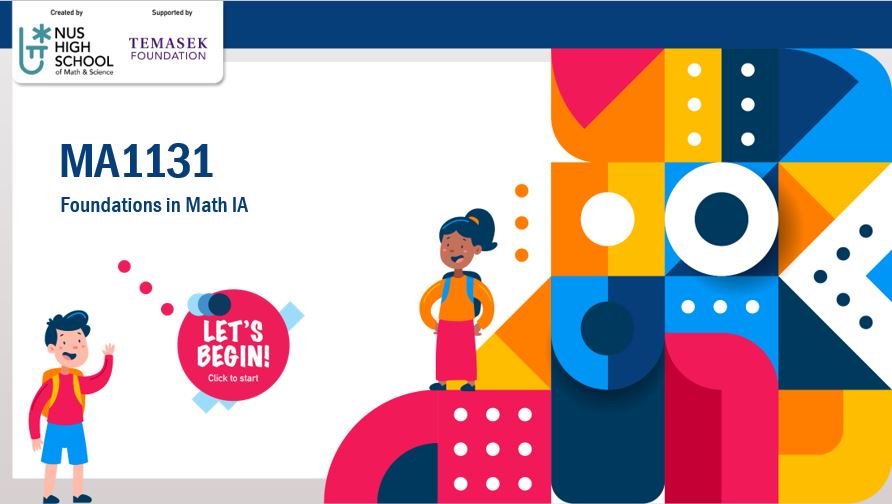The Way Forward: Innovative Ways to Reshape the Future
13 Apr 2021“Don’t let a crisis go to waste.”
Nowhere is this adage more apt than in current times. As we struggle to recover more than a year into the pandemic, we also take stock of the lessons and opportunities to future-proof our communities. What have we learned? What do we want to change?
The pandemic has forced us to face pre-existing structural gaps, particularly in the areas of climate change, education and digital integration – and to respond with social and technological innovations to bridge these gaps and come back stronger. Starting at home in Singapore, we are working with our partners to build a resilient and smarter world.
- New technologies offer promise of a green recovery
As a result of worldwide COVID-19 restrictions in 2020, greenhouse gas emissions plunged, recording a 7-percent drop from 20191.
Despite this being the largest decline in history, the reduction has had a negligible impact in slowing climate change. Carbon emissions will also likely rebound as the pandemic eases off and economies begin to re-open. That’s why a ‘green recovery’ is crucial, and experts are calling for governments to prioritise policies that tackle climate change in their economic recovery plans. The idea of ‘building back better’ has gained traction and already the European Union and China, among others, have committed to environmental goals.

Climate change is especially pertinent to Southeast Asia which is expected to face more dire consequences as a result of global warming and shifts in weather patterns
The transition to green economies requires new business models, competencies and technologies. One of the priorities is the adoption and scaling of high potential technologies. This often starts with the identification of disruptive, game-changing ideas that have both social transformative impact and commercial promise.
It is here that innovation challenges like The Liveability Challenge by Temasek Foundation and grants to support the commercialisation of innovative solutions have started to pave the way. By awarding project development funding to promising innovations, several technologies with high potential, in areas such as circular economy, decarbonisation and renewable energy, have started to gain traction.
One such example is a new vertical farm prototype in Singapore’s heartlands, which test-beds the high-tech commercial production of vegetables and other crops using unutilised vertical spaces in public housing estates. Since late 2020, the five-storey farm built along the facade of Block 146 in Tampines has been yielding harvests of local vegetables using cloud technology and clean technologies such as drip irrigation system and solar energy.

By harnessing solar energy to power the ecosystem, the lower operational costs allows for the production of local, staple vegetables and sell them at prices comparable to traditional local farm produce at the supermarket
On a larger scale, the 2020 winner of The Liveability Challenge, TurtleTree Labs, was awarded S$1 million in project development funding to develop its biotech solution to create milk using proprietary cell-based methods. With the additional funding it has since secured and the increased interest from global investors and customers, it is poised to offer a sustainable alternative to dairy products. This, in turn, lowers our dependence on animal agriculture, a major contributor to greenhouse gas emissions2.
- Learning goes beyond the classroom
Schools will play a crucial role in helping us to adapt to changes brought about by COVID-19 by, among other things, enhancing individual and parental efforts to train muscles of curiosity. To develop learning as a competency, teachers will need support and resources from schools and the wider education system to reinforce new ways of learning.
These new ways of learning could range from personalising lessons, so that children are more engaged and encouraged to explore, to facilitating learning beyond the classroom.
In partnership with the Early Childhood Development Agency (ECDA), we are introducing the Outdoor Learning Training Programme to build capability in implementing outdoor learning for preschool children in Singapore. This is one of several initiatives to nurture and encourage, from a young age, the mindset of learning beyond the classroom.
To nurture an interest in subjects like Mathematics and Science beyond the prescribed syllabus, we are also supporting the development of Blended Massive Open Online Courses (bMOOC) at the NUS High School of Mathematics and Science. bMOOC is an online platform that allows for self-paced asynchronous learning paths for Primary School students to increase their proficiency anywhere, anytime. More than just virtual learning, bMOOC creates opportunities for participants, NUS High staff and students who are scholarship holders to interact and learn from each other.

The bMOOC online platform helps students learn at their own pace
- Digital technology as a bridge for human connection
As most socially distanced themselves and worked from home to curb the spread of COVID-19, virtual connections took over. The mass adoption of digital technologies offered proof of benefits that we may not have otherwise seen. They also presented opportunities to innovate and change for the better.
For instance, in the field of education, technology plays a big role in better supporting teachers by reshaping how lessons are administered, how teachers grade and monitor overall performance, hence freeing up their time and capacity to focus on individual students.
Technology has also transformed and enabled better pandemic management at the frontlines. For instance, at the height of infections when migrant worker dormitories had to be closely monitored, Temasek Foundation supported the development of SGDormBot, a multilingual Artificial Intelligence-powered bot for clinicians to enable real-time monitoring of COVID-19 positive migrant workers. The mobile health solution assists with remote self-monitoring of vital signs including temperature, heart rate and oxygen saturation, and would send clinicians an instant SMS alert when patients report abnormal vital signs, allowing them to intervene quickly despite not being on site.

SGDormBot is a mobile health solution for remote self-monitoring of vital signs including temperature, heart rate and oxygen saturation
Yet, the rise of virtual connections has also been met with an increased sense of alienation. Masked faces, isolation and social distancing have exacerbated anxieties and mental health worries globally. In Singapore, concerns of mental wellness drove the creation of a mental health resource site for the community – My Mental Health was a collaboration between Temasek Foundation, Agency for Integrated Care, National CARE Hotline and the National CARE Management System to offer mental health resources and support helplines on community needs on the ground.
We may never return to the life we used to know, but the new normal can be a better society as we leverage social and technological innovation opportunities to bridge gaps and build resilience.
1 https://www.cnbc.com/2020/12/11/covid-record-drop-global-carbon-emissions-2020.html
2 https://www.tandfonline.com/doi/full/10.1080/17524032.2020.1805344